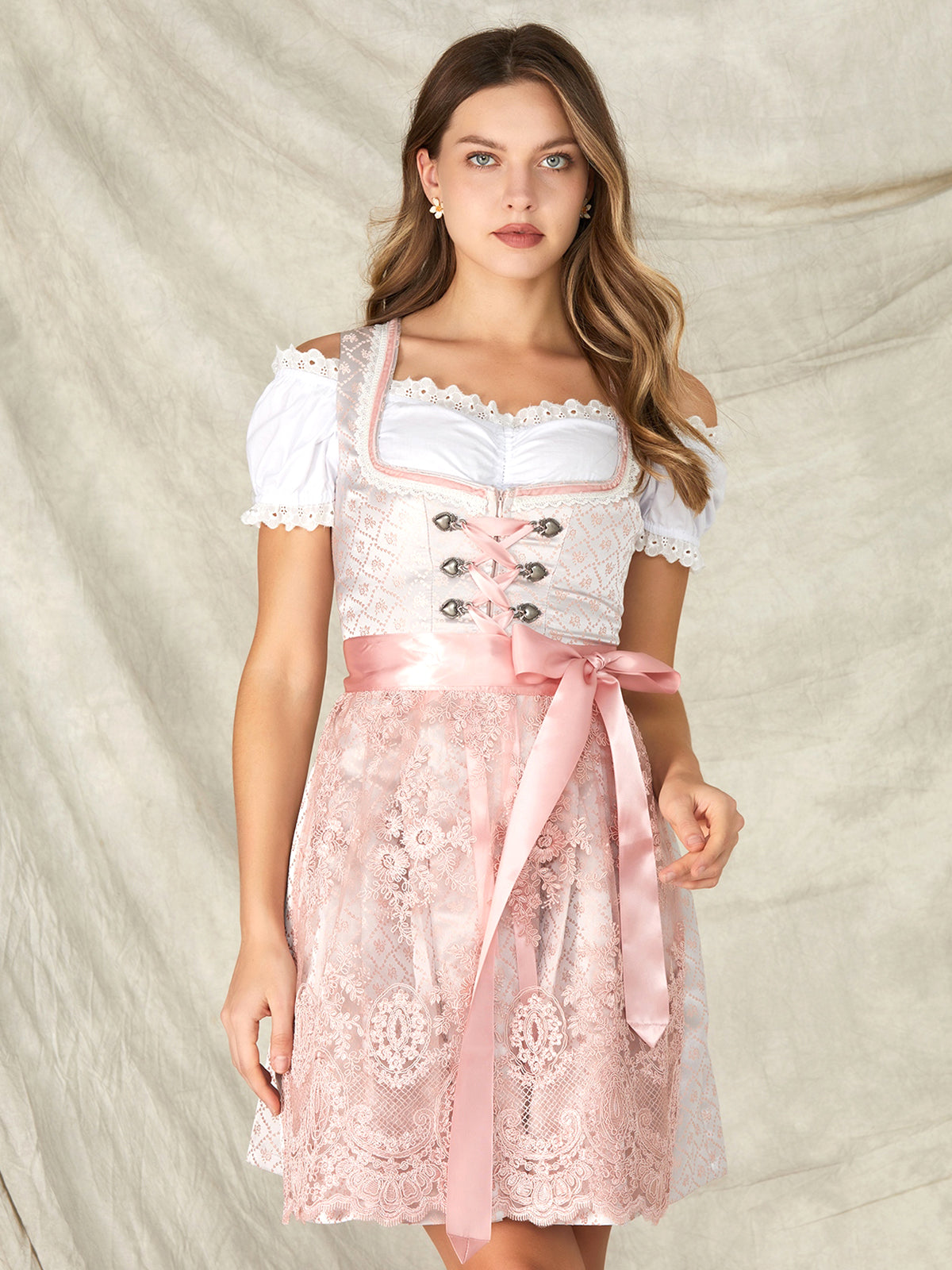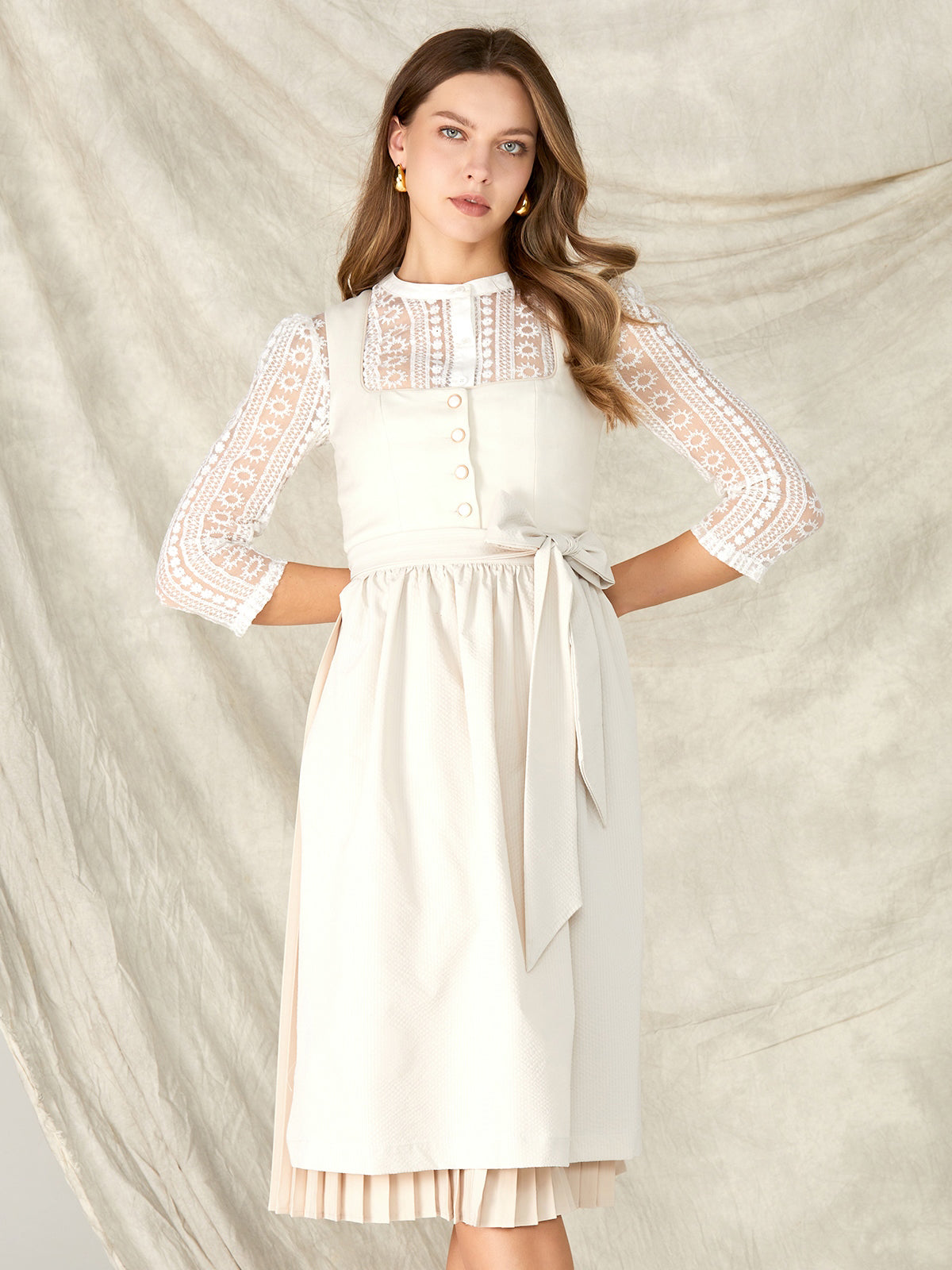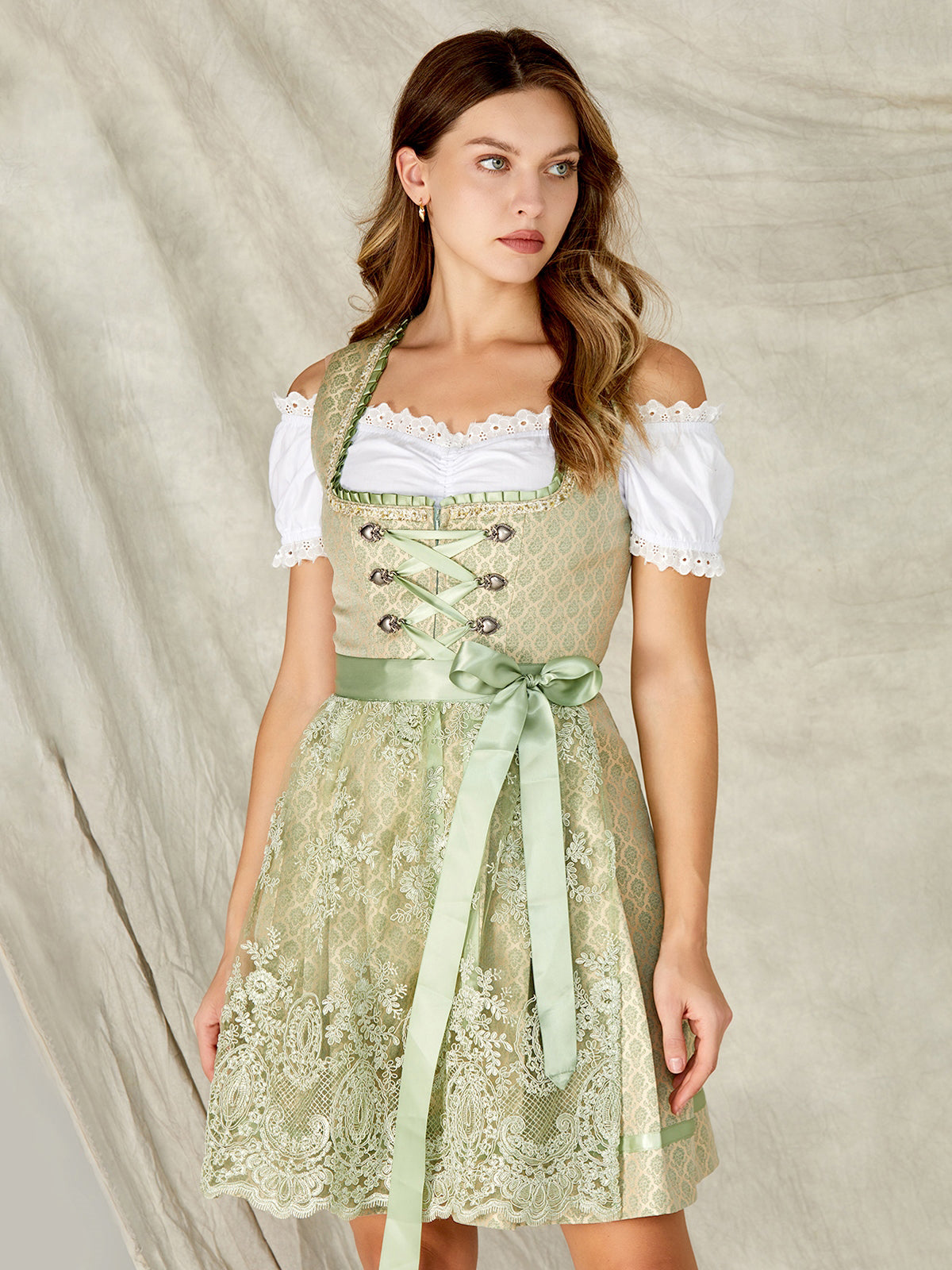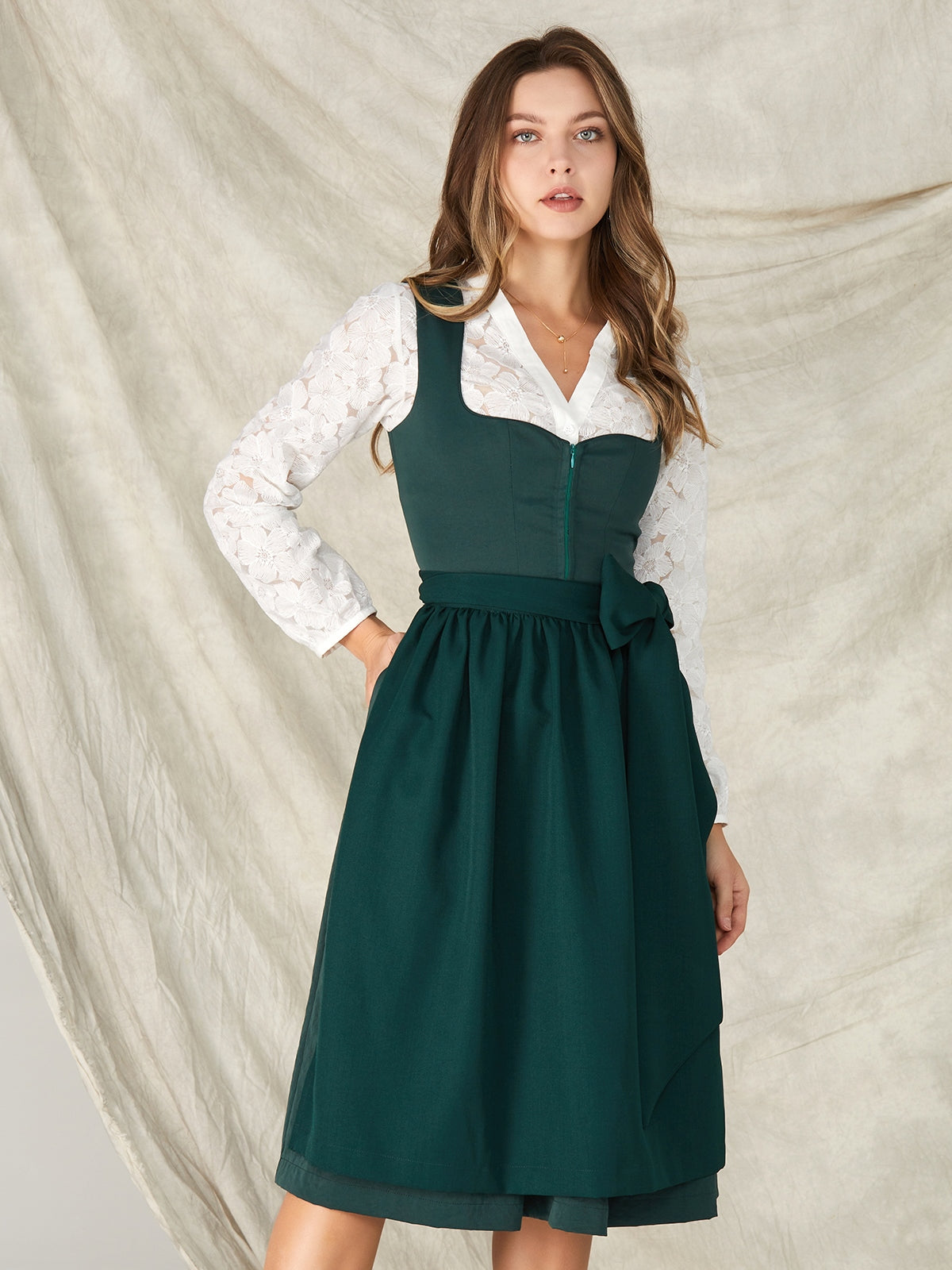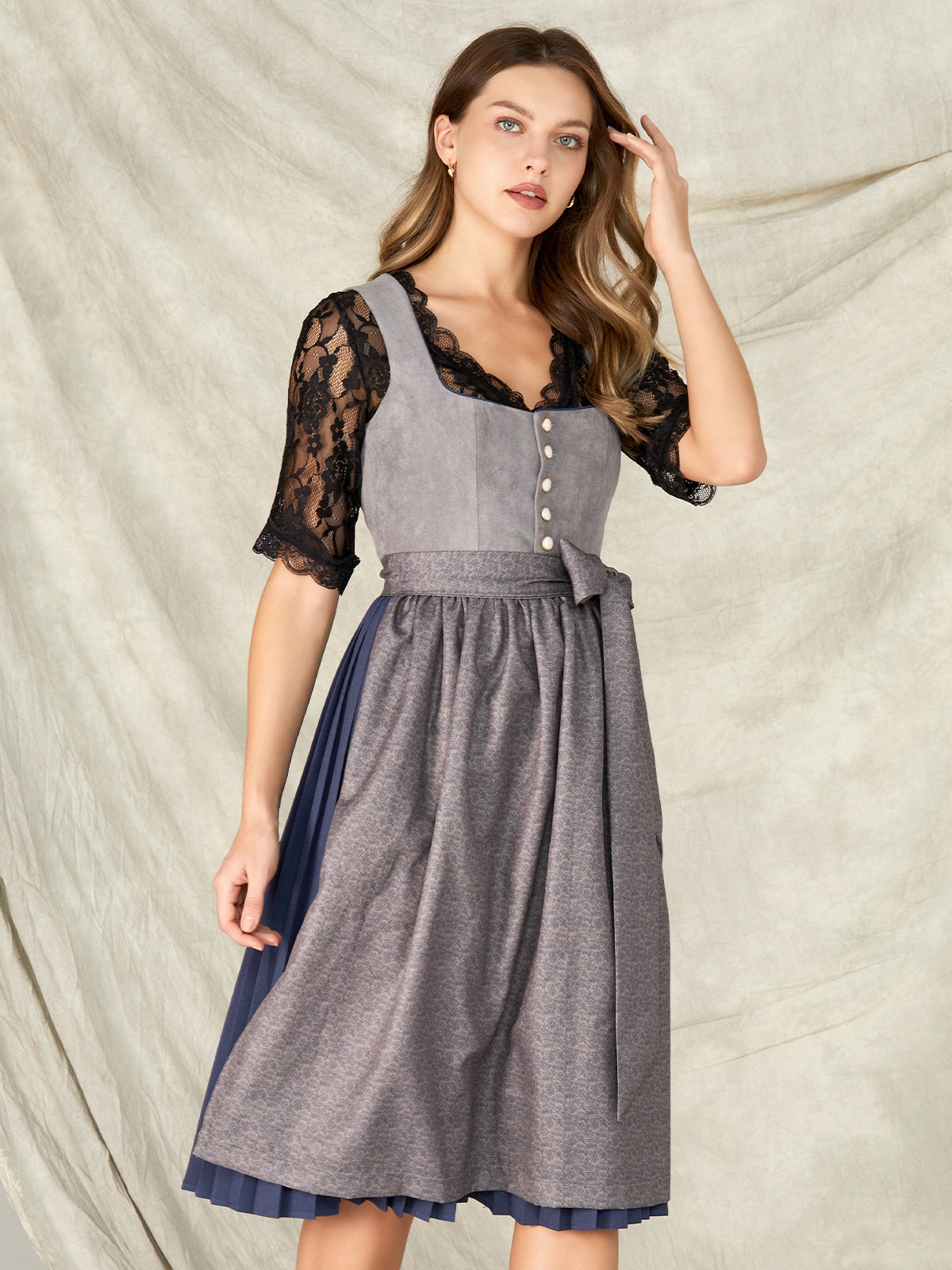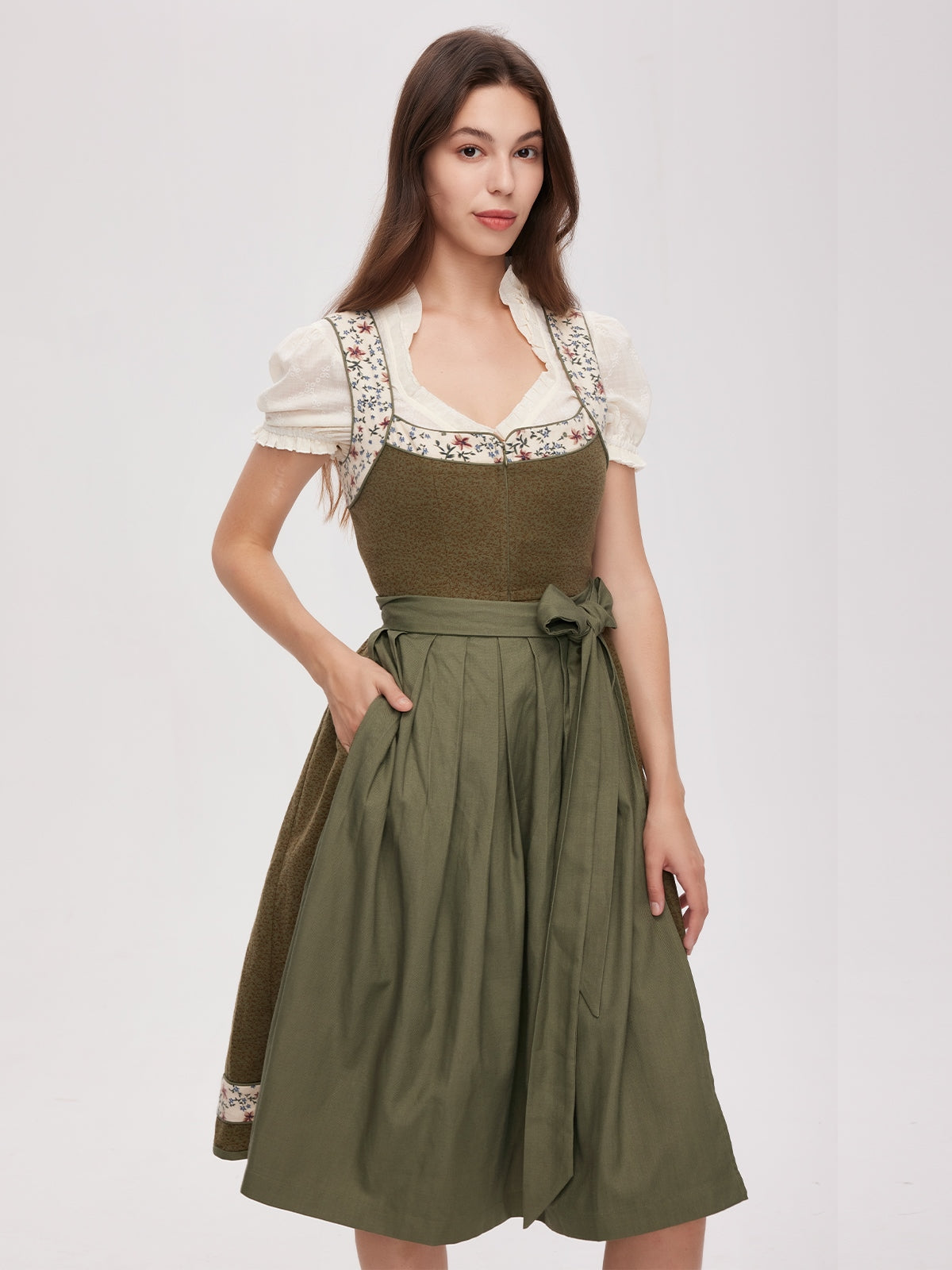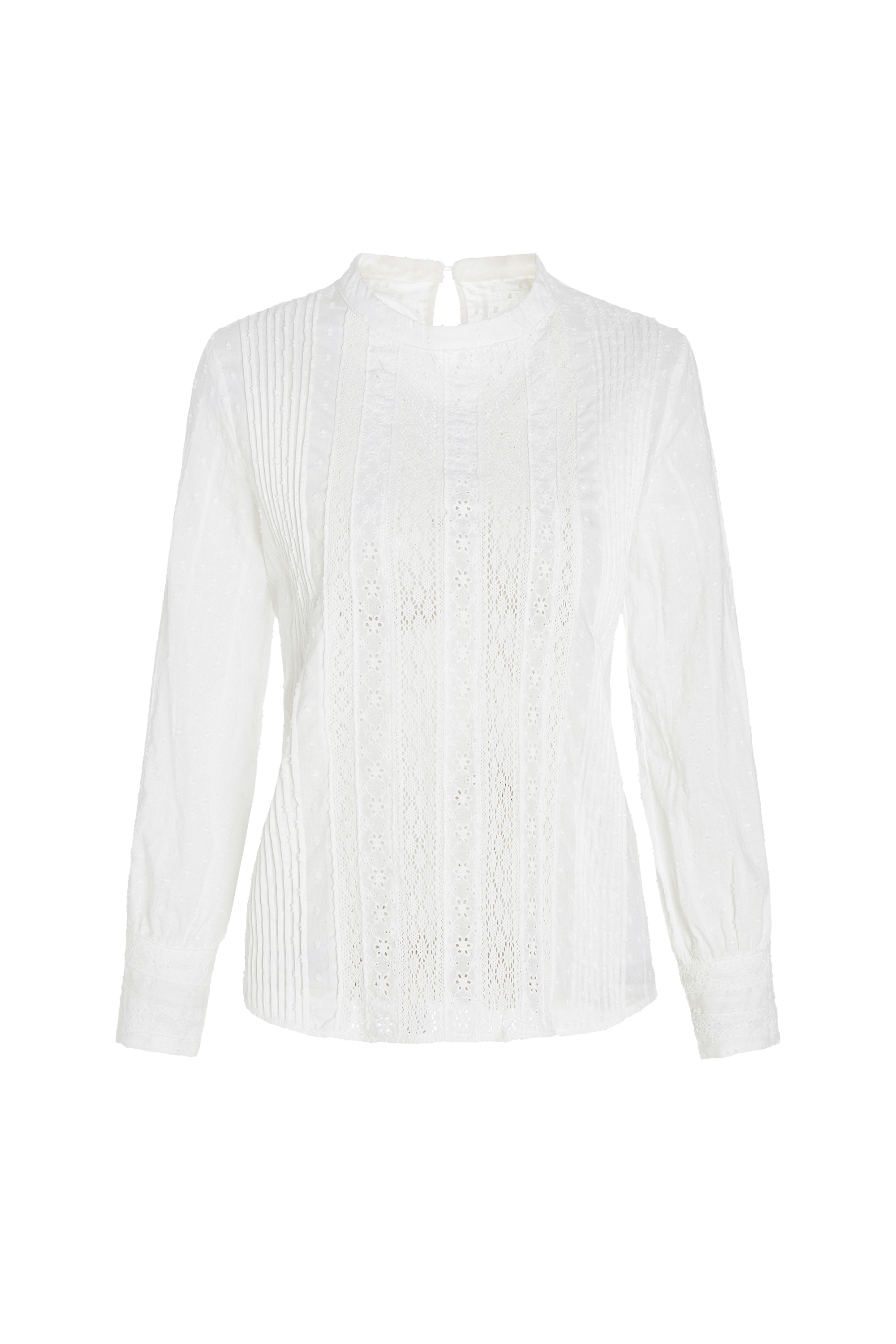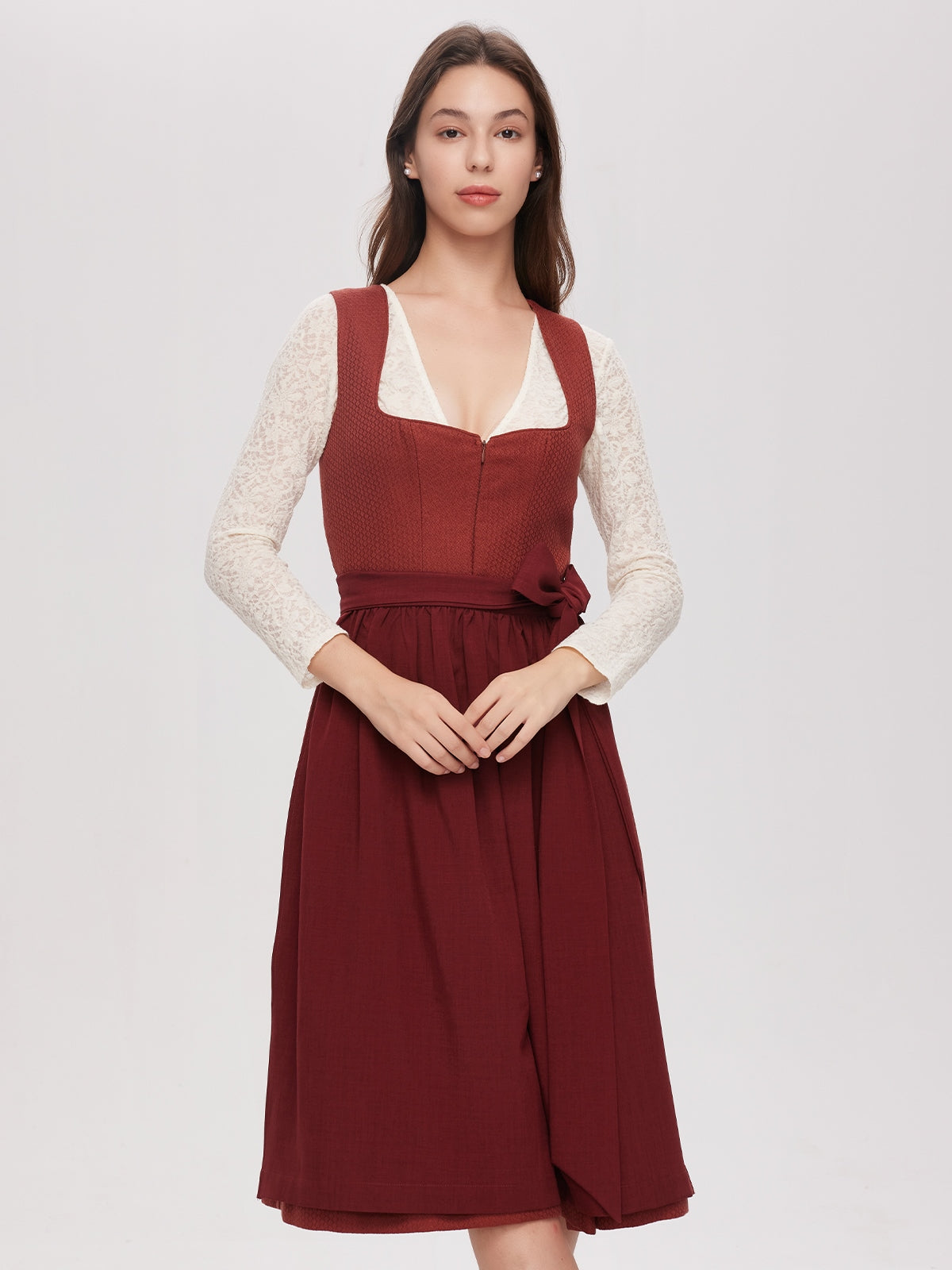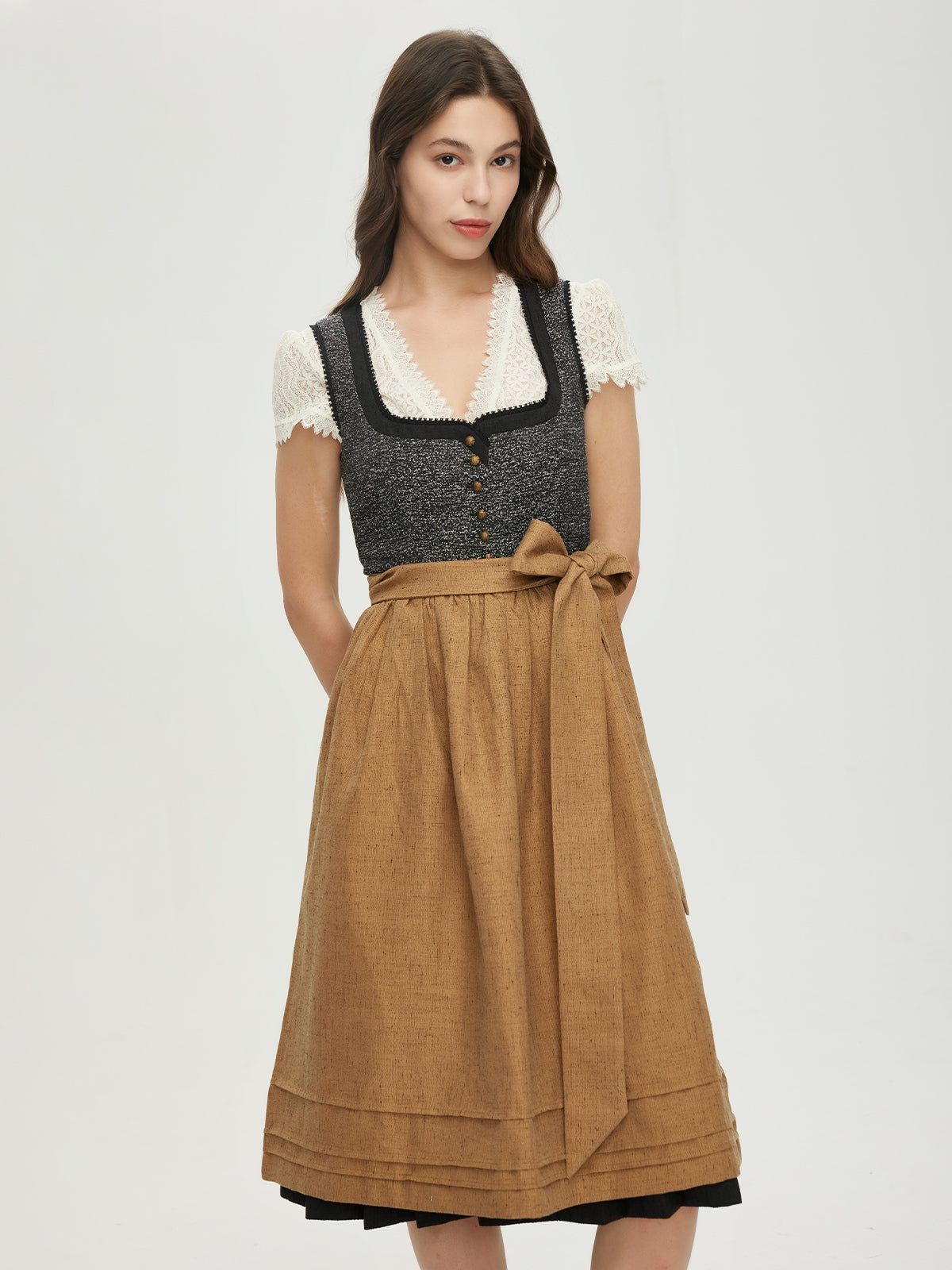Introduction: The Dirndl as a cultural heritage
The dirndl, originally designed as workwear for peasant women in the 19th century, has evolved into an iconic Bavarian fashion symbol. With its simple elegance and precise craftsmanship, it embodies not only festive joy but also the pride of regional identity. Whether in the classic green dirndl , as a luxurious velvet dirndl, or as a special offer at a dirndl sale – every dress tells a story.
In this article, we explore the aesthetic and cultural dimensions of the dirndl, offer style advice for perfect traditional costume combinations, and shed light on the craftsmanship behind its production.
1. Design elements: From the heart neckline to the apron
Colors and fabrics
The typical color palette for a dirndl includes deep blue, wine red, or the more natural dirndl green, often combined with snow-white ruffles and lace. Particularly high-quality velvet dirndl models impress with their velvety sheen, which lends the dress a regal charm.
The heart neckline
A distinctive feature is the sweetheart neckline, which appears feminine yet understated. Historically, it served a practical purpose; today, it is a symbol of romantic femininity.
Accessories: Belts and Bags
A braided fabric sash accentuates the waist, while leather "snack bags" (often with floral motifs) complete the look. At a dirndl sale, it's worth paying attention to handmade details.
2. Style advice: From footwear to hairstyle
Shoes and socks
- Wooden shoes ( “Haferlschuhe” ) with color-coordinated wool socks (e.g. beige to dirndl green) create harmony.
- Modern variations: Elegant ballerinas with pearl embroidery.
Headgear
- Flower wreaths for young women, felt hats with chamois beard for a traditional touch.
- Tip: Gold hair clips look particularly elegant with a velvet dirndl.
3. Cultural history: From work dress to festive outfit
In the 19th century, the dirndl became popular among Bavarian nobles as a "country house fashion." Today, designs in dirndl sale collections often reflect modern cuts, while vintage velvet dirndls are passed down through families.
Care and restoration
- Silk and velvet may only be dry cleaned.
- Old buttons or embroidery can be repaired by specialists – a sign of lasting appreciation.
4. The Dirndl today: Between tradition and trend
Whether at Oktoberfest or weddings, the dirndl remains a must-have. Online shops with dirndl sales make the traditional costume accessible, while designers like Lodenfrey offer modern interpretations of velvet dirndls with Swarovski crystals.
Conclusion: More than just a dress
The dirndl is a living cultural asset that combines craftsmanship, aesthetics, and identity. Whether in dirndl green, as an opulent velvet dirndl , or in a bargain dirndl sale – it invites you to celebrate Bavarian joie de vivre.

